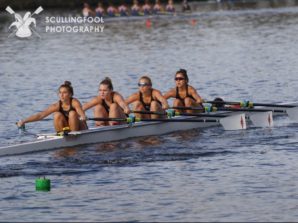
Competitive rowing has been a popular sport since the 1800s. In London, rowing races frequently attracted vast crowds. Soon, rowing communities were brought to America. The first college rowing club was formed at Yale University in 1843 and from then on, rowing has piqued the interests of many across the globe. In the past few years, rowing is becoming more popular with student athletes. Now, Aragon students find pleasure outside of school, paddling away with delight.
Because rowing is not a conventional high school sport, students find other means for getting involved in it.
“Honestly, I first started rowing because it was a family thing,” said senior Charlotte Duan. “There was never really a question about it and I learned to love the sport.”
Rowing is often found attractive because it is a non-contact sport. Rowing athletes shy away from injury prone exercises such as running, ensuring that they are at tip top shape.
“I got interested in rowing before my freshman year,” said junior Natalie Graham. “Before that I had played many other sports, but due to knee injuries I needed a lower impact sport.”
In the recent slew of college recruiting scandals, a few wealthy parents and coaches have been accused of using rowing as a means of getting accepted into prestigious colleges. However, rowing as a sport has its benefits and is attractive in other ways.
At Aragon, some students in physical education are introduced to the arm movements of rowing through the ergometers, also known as rowing machines, in the fitness room. Rowing is a total body workout, acting as an aerobic and resistance training conditioner that exercises all parts of the body. For example, rowing helps maintain improved body posture by working out the upper back.
Not only does rowing act as a great form of exercise for athletes, many students are attracted by the camaraderie displayed in a rowing crew.
“Rowing is a unique sport in so many ways. It’s a team sport, but you’re not at any field or passing a ball with some game plan,” Duan said. “At the same time, you race lane by lane, towards a finish line, but it’s not just your pure speed and strength being tested.”
However, since most high schools, including Aragon, do not have a rowing crew, students have to seek out clubs to attend. Therefore, their practice and competition schedules vary from school sports.
“Our practice schedule is pretty demanding, but still leaves time for you to be a student and a person outside of rowing,” Graham said. “We practice twice a week at 5 a.m., and in the later mornings on Saturday and Sunday. Since the races are different lengths the venues for the races vary as well. This spring we have some local races as well as one in San Diego and Long Beach.”
Because of the traveling rowers have to do, they often have to sacrifice time at school in order to make it to compete in these races.
“When racing is in full swing, we have races approximately every other weekend. Races, also called regattas, are two to three days long,” Duan said. “We travel to places like Florida, Boston, and all over California for racing. I miss a lot of school in the spring for racing because I have to take Thursdays and Fridays off.”
But despite any burdens taken on due to missed classes and tests, rowing is overall a great sport that many enjoy.
“Since we practice so much together, travel together, and of course work together in the boat; we all have become really close,” Graham said. ”In rowing, since you are all together in a boat you need to have complete trust in your teammates and follow all of their actions.”



